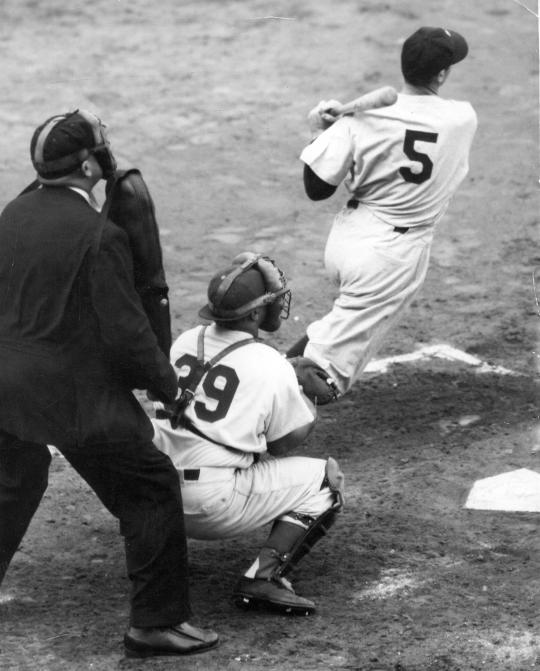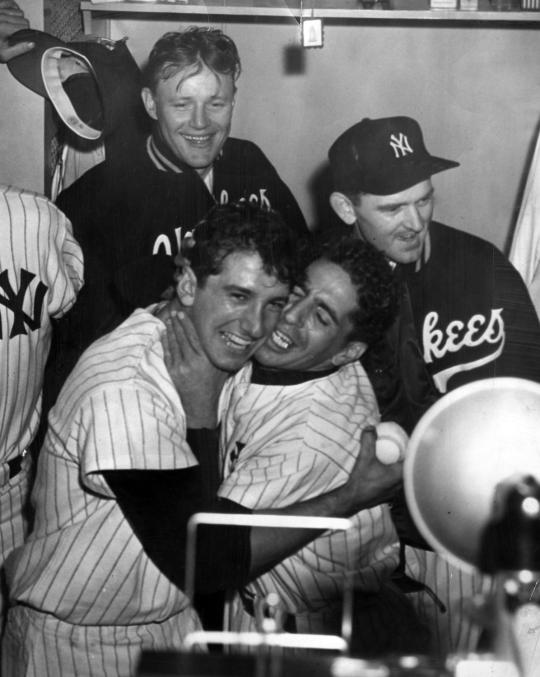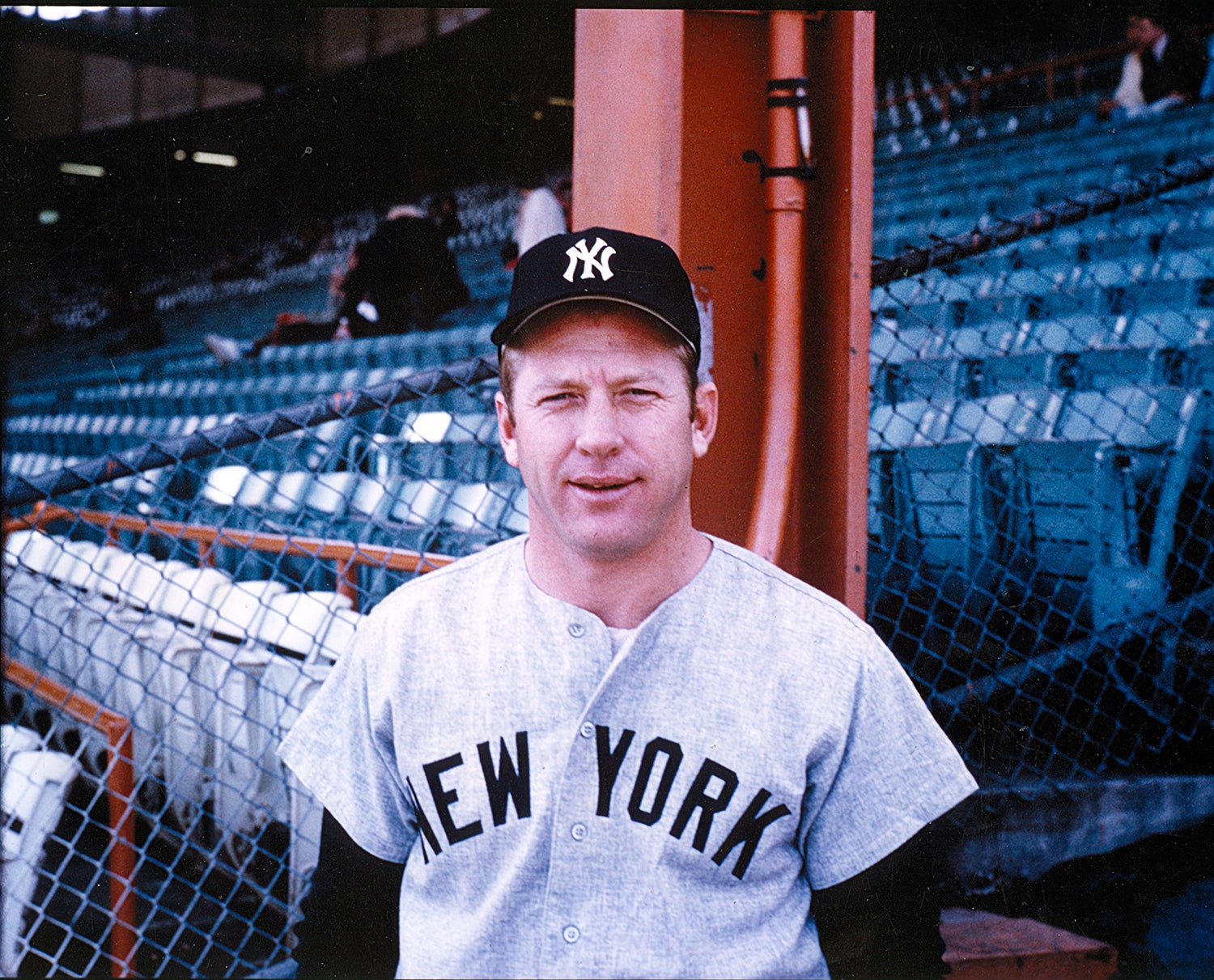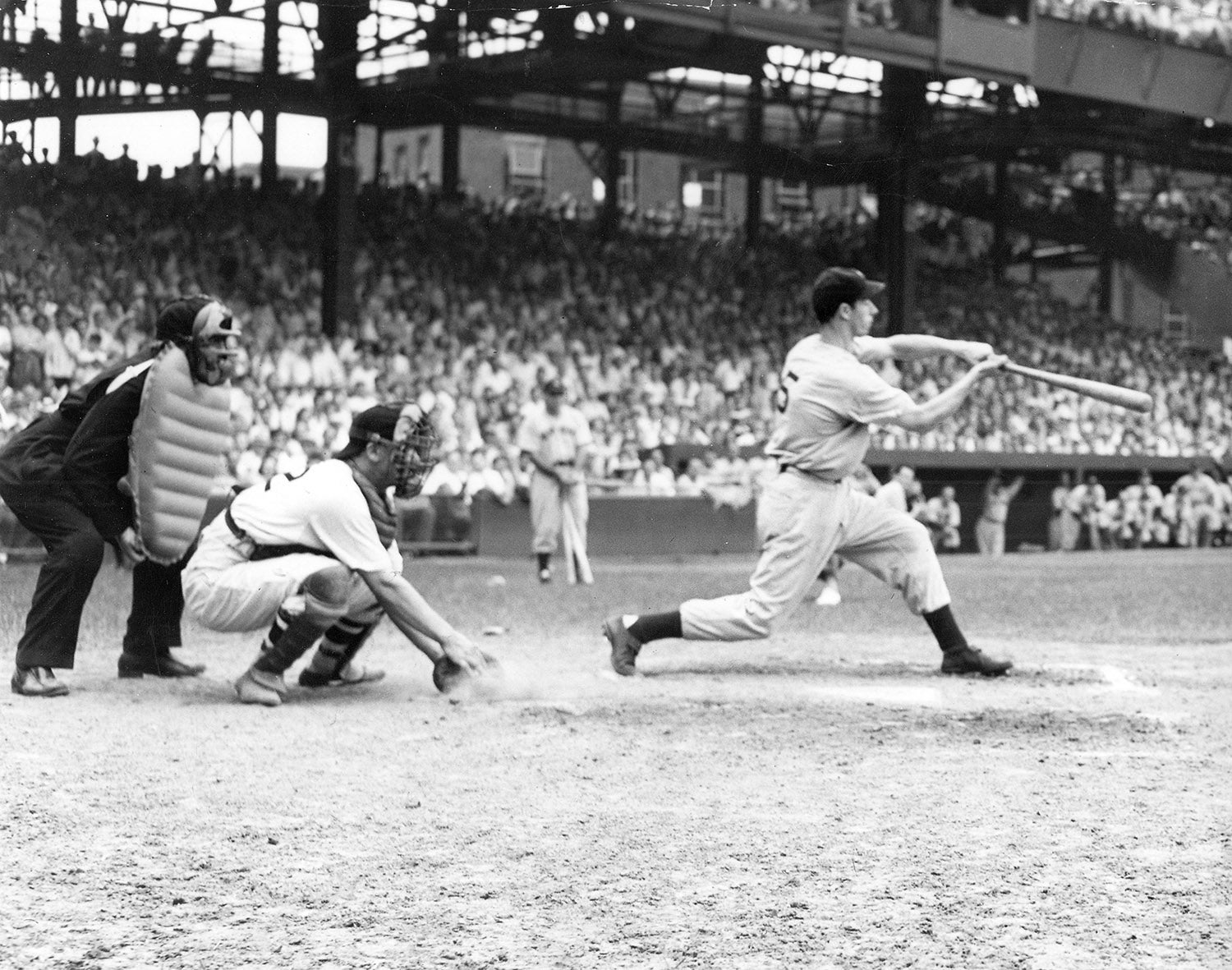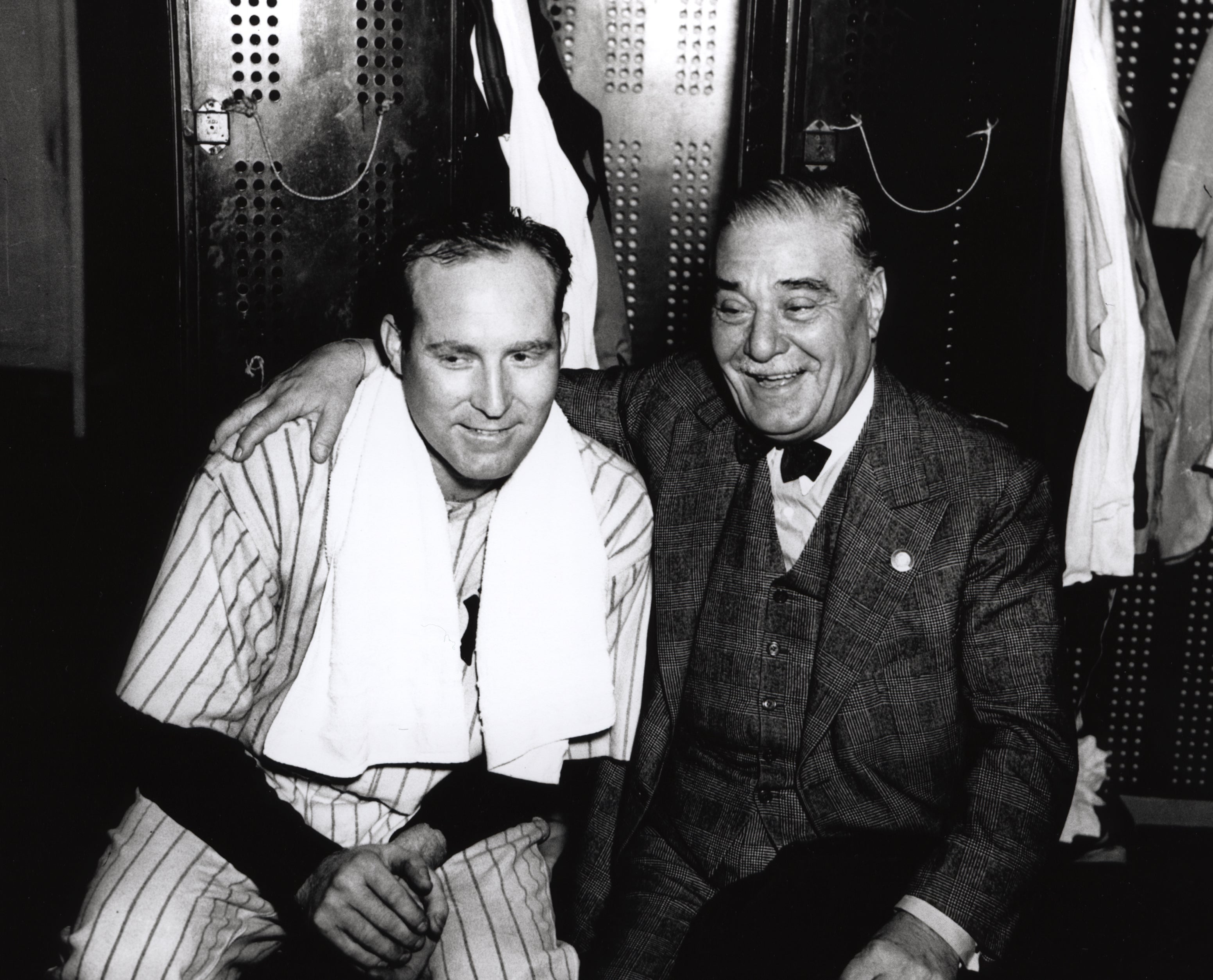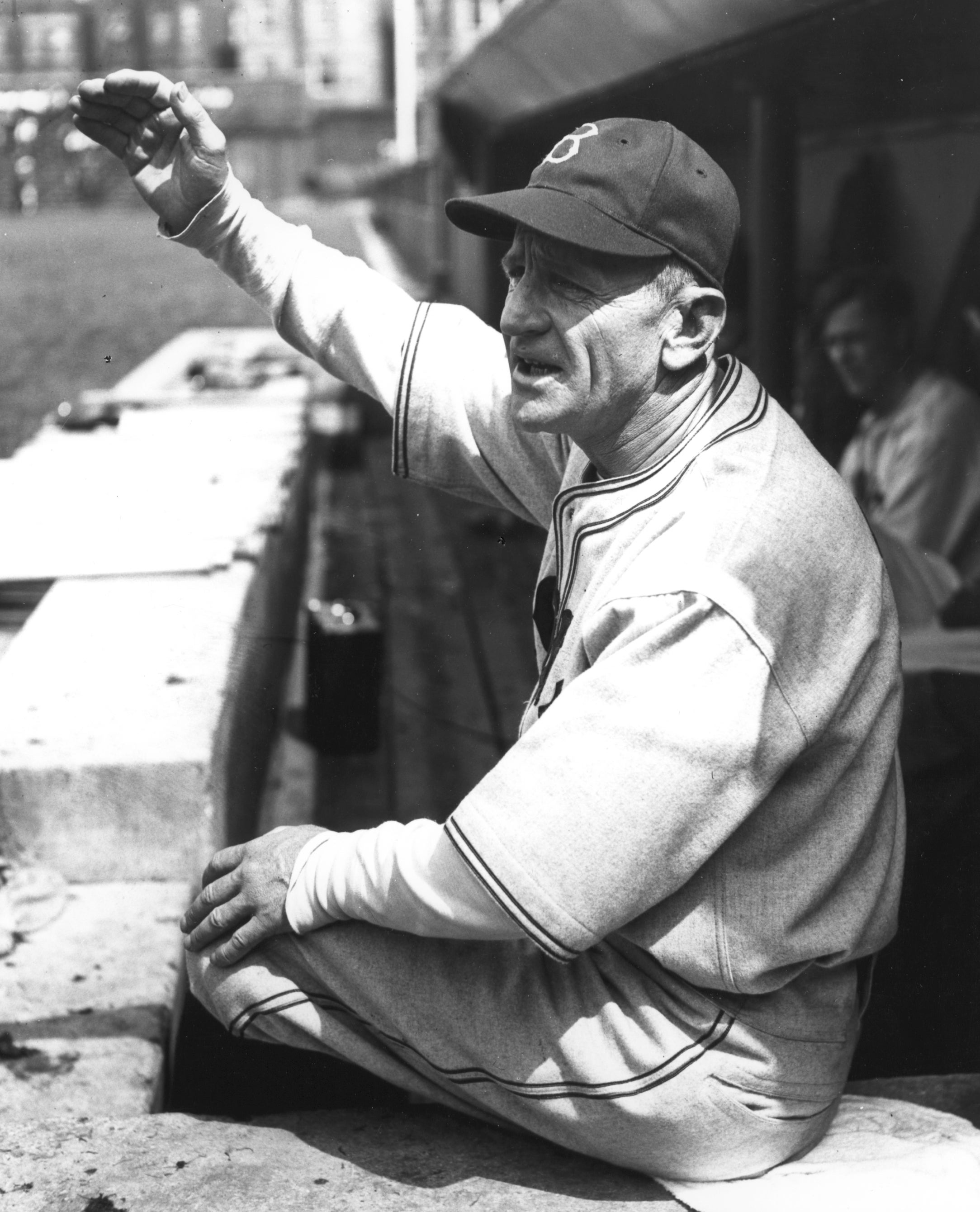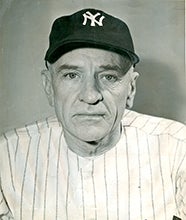- Home
- Our Stories
- Yankees’ five-year title stretch still unmatched
Yankees’ five-year title stretch still unmatched
The love of Casey Stengel’s life wasn’t thrilled with her husband’s decision to accept the New York Yankees manager’s job following the 1948 season.
Stengel was 58, and after four decades in baseball, his wife, Edna, was hoping the two of them would finally be able to kick back and enjoy their home in California. But difficult big league stints with the Brooklyn Dodgers and Boston Braves had left Stengel unfulfilled.
Official Hall of Fame Merchandise
Hall of Fame Members receive 10% off and FREE standard shipping on all Hall of Fame online store purchases.
Hall of Fame Membership
There is no simpler, and more essential, way to demonstrate your support than to sign on as a Museum Member.
“Edna, I had to,’’ the late manager explained in best-selling author Marty Appel’s biography, "Stengel: Baseball’s Greatest Character."
“I owe it to myself to prove I’m a better manager than they’ve given me credit for. I have to prove I can win in the majors. I have that confidence in myself. But I have to prove it to others.”
Edna was not the only person disappointed. Fans and sportswriters greeted the news with skepticism and ridicule. Many remembered Stengel’s antics as a ballplayer, including the time he released a bird from beneath his cap during a game. He was widely regarded as a failure as a manager of big league clubs that never finished higher than fifth place in his nine seasons.
None of Stengel’s critics was more stringent than Boston Record sports columnist Dave “The Colonel” Egan who proclaimed that the Yankees had been mathematically eliminated from the 1949 pennant race the second they signed their new manager. Wrote Egan: “To paraphrase the remarks of Winston Churchill on another occasion, here is a man who has been brought in to supervise the dissolution of the Yankee empire.’’
How wrong Egan would be. And how pleased and proud Edna would become. Not only did the Yankees win the pennant and World Series in Stengel’s rookie season as Yankees manager, but they repeated the feat again and again and again and again. This Casey would become mighty. He wouldn’t strike out. Instead, he’d go five-for-five, over-seeing the greatest championship run in baseball history.
The Yankees' Joe DiMaggio homers in the fourth inning of Game 5 of the 1949 World Series, helping New York win the game 10-6 and capture the Fall Classic title. The catcher is Brooklyn's Roy Campanella and the umpire is Hall of Famer Cal Hubbard. (National Baseball Hall of Fame and Museum)
As America transitioned from World War II to peace time to the Korean War, and from “Give ’em Hell” Harry Truman to Dwight “I like Ike” Eisenhower, Yankee fans adjusted to the end of the Joe DiMaggio Era and the beginning of the Mickey Mantle Era. There would be a one-year overlap of the Hall of Fame centerfielders in 1951. DiMaggio’s final three seasons and Mantle’s first three seasons resulted in championships, but “Joltin’ Joe” no longer was the sublime player he had been for most of his career and the “Commerce Comet” was just beginning to light up the baseball firmament.
While both would contribute to that unparalleled World Series title streak, significant contributions also would be made by catcher Yogi Berra, shortstop Phil Rizzuto – and a bunch of seemingly interchangeable players that Stengel masterfully juggled in and out of the lineup and a pitching rotation led by Allie Reynolds, Ed Lopat, Vic Raschi and a brash southpaw from Queens named Whitey Ford.
None of Stengel’s teams from 1949-1953 would win 100 games, and two of his clubs wouldn’t clinch pennants until the last weekend of the season. But each of those pinstriped squads capped seasons with Series titles, with three of the crowns coming against the Brooklyn Dodgers and one each against the New York Giants and Philadelphia Phillies.
The Bronx Bombers’ four-games-to-two victory over the Dodgers in 1953 enabled them to break the baseball record established by their Yankee predecessors, who won four consecutive Fall Classics from 1936-39. The closest any teams have come to matching the feat were the 1972-74 Oakland A’s and the 1998-2000 Yankees.
“It’s funny, but our Yankee teams from the late ‘40s, early ‘50s probably don’t get the historical credit they deserve,’’ said Bobby Brown, one of a handful of players on the Yankees roster for the five consecutive World Series championship teams. “We weren’t considered dominant the way the ’27 Yankees or the ’61 Yankees or the ’98 Yankees were. All we did was win championships. Joe was fading. Mickey was just starting to come into his own. But we had other great players – some Hall of Fame players, some All-Star players – and we had one heck of a pitching staff.”
That they did. Raschi had three 20-win seasons, while going 92-40 during the streak. “Steady” Eddie Lopat went 80-36 and “Super Chief” Allie Reynolds went 83-41. Ford, who was inducted with Mantle into the Hall of Fame in 1974, missed two years while serving in the Army, but went 27-7 in parts of two seasons during the run.
The Yankees' Mickey Mantle falls to the ground after injuring his knee during Game 2 of the 1951 World Series at Yankee Stadium. Yankees center fielder Joe DiMaggio caught the fly ball off Willie Mays' bat for the out. The Yankees defeated the Giants in the World Series, the only one that would feature Mantle and DiMaggio as teammates. (National Baseball Hall of Fame and Museum)
“We also had a heck of a manager,’’ said Berra, the late Hall of Fame catcher who also played on all five title teams. “We didn’t always understand what Casey was saying or doing, but he always wound up looking like a genius because at the end of the season we were the ones drinking the victory champagne.”
Berra and Stengel were kindred spirits, bonded by a love of baseball and a way with words. Yogi-isms such as “It ain’t over ‘til it’s over” and “It’s déjà vu all over again” were repeated by plumbers and U.S. Presidents. Stengel’s convoluted and obfuscating language and his stream of consciousness monologues were dubbed by reporters as “Stengelese.” The “Old Perfessor” delivered his share of head-scratching quotes, too, such as, “There comes a time in every man’s life, and I’ve had plenty of them.”
The two men became central figures in baseball’s greatest run. Stengel called Berra “my assistant manager,” allowing him to call all the pitches. “Why has our pitching been so great?’’ Stengel asked rhetorically. “Our catcher, that’s why. He looks cumbersome, but he’s quick as a cat.”
And Berra could hit a little, too. The Hall of Famer’s average season during the Yankees five-year run: 28 homers, 98 RBI and a .297 batting average. No wonder Berra was one of the few names the platoon-loving Stengel would write on his lineup card every day. In 1950, the Yankees played 22 doubleheaders. Berra caught both ends of the twin-bills 19 times. Marveled Stengel of his durable, winning backstop: “He’d fall in a sewer and come up with a gold watch.”
Yankees pitcher Bob Kuzava is mobbed by his teammates after recording the final out of the 1952 World Series. Kuzava, who had not pitched in the first six games of the Fall Classic, worked 2.2 scoreless innings to preserve the Yankees' 4-2 win in Game 7. (National Baseball Hall of Fame and Museum)
Rizzuto also played an integral role in the streak, but the Hall of Fame shortstop’s relationship with Stengel was less chummy. The “Scooter” couldn’t forget the time he tried out for the Dodgers and was told by then-manager Stengel he was too small and should get a job shining shoes. Rizzuto wound up having shining seasons during the run, peaking in 1950 when his 200 hits and .324 batting average earned him American League MVP honors. His fielding also stood out.
“My best pitch,’’ said Reynolds, “is any time the ball grounds, lines or pops in the direction of Rizzuto.”
Stengel captured people’s attention by employing a platoon system similar to the one used by manager John McGraw when Casey was an outfielder for the New York Giants in the early 1920s. Stengel matched right-handed batters vs. left-handed pitchers, left-handed batters vs. right-handed pitchers, and also made pitching changes or sent up pinch-hitters based on percentages and intuition. He often made defensive substitutions late in games to protect leads.
Although today these strategies are common place, they were considered innovative, even revolutionary, in Stengel’s day. “I never saw a man who juggled his lineup so much and who played so many hunches so successfully,’’ marveled Hall of Fame manager Connie Mack.
In the 1952 season, Stengel used a mind-boggling 95 different batting orders. “Some guys grumbled about that,’’ Berra said. “But I guarantee they weren’t grumbling when they were cashing their World Series checks.”
Many players became heroes in Stengel’s revolving-door system. Brown batted .500 in the 1949 World Series when the Yankees beat the Dodgers, four games to one.
Manager Casey Stengel celebrates with his Yankees team, including Phil Rizzuto (left), following the Bronx Bombers' defeat of the Dodgers in the 1949 World Series. Stengel's Yankees would go on to win four more World Series in a row, the longest stretch of dominance in the game’s history. (National Baseball Hall of Fame and Museum)
As a 21-year-old in the 1950 Fall Classic, Ford started and pitched eight scoreless innings in the clinching game of a sweep of the Philadelphia Phillies’ “Whiz Kids.” The following October, Hank Bauer smashed a bases-loaded triple and made a diving catch in right field, and reliever Bob Kuzava clinched the title with three outs in the ninth inning after not having appeared in any of the previous five games.
The next year, Kuzava repeated his heroics when – after not pitching in the any of the Series’ first six games – he retired eight straight Dodgers to preserve the Yankees’ 4-2 victory in Game 7.
One of Stengel’s all-time favorite players – pugnacious Billy Martin, whom he had managed in the minors – starred in the Fall Classic in both 1952 and 1953. Martin’s heads-up catch of a Jackie Robinson pop-up in Game 7 of the 1952 Series – with Kuzava on the mound – snuffed out a seventh-inning rally, enabling the Bronx Bombers to beat the Dodgers. In the next Fall Classic, Martin rapped a record 12 hits in six games as the Yankees again beat their cross-town rivals and completed their “one-for-the-thumb” campaign.
The moves proved resoundingly that Stengel could win in the majors. The failure had become a genius.
Scott Pitoniak is the author of “Let’s Go Yankees: An Unforgettable Trip to the Ballpark.” He resides in Penfield, N.Y.

